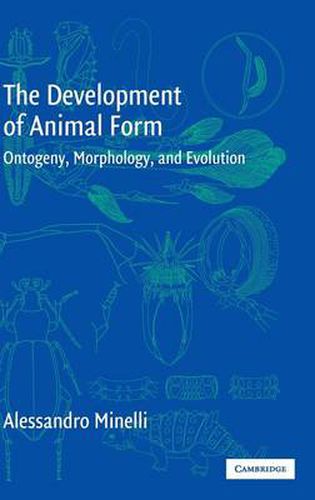Readings Newsletter
Become a Readings Member to make your shopping experience even easier.
Sign in or sign up for free!
You’re not far away from qualifying for FREE standard shipping within Australia
You’ve qualified for FREE standard shipping within Australia
The cart is loading…






Contemporary research in the field of evolutionary developmental biology, or ‘evo-devo’, has to date been predominantly devoted to interpreting basic features of animal architecture in molecular genetics terms. Considerably less time has been spent on the exploitation of the wealth of facts and concepts available from traditional disciplines, such as comparative morphology, even though these traditional approaches can continue to offer a fresh insight into evolutionary developmental questions. The Development of Animal Form aims to integrate traditional morphological and contemporary molecular genetic approaches and to deal with postembryonic development as well. This approach leads to unconventional views on the basic features of animal organization, such as body axes, symmetry, segments, body regions, appendages and related concepts. This book will be of particular interest to graduate students and researchers in evolutionary and developmental biology, as well as to those in related areas of cell biology, genetics and zoology.
$9.00 standard shipping within Australia
FREE standard shipping within Australia for orders over $100.00
Express & International shipping calculated at checkout
Contemporary research in the field of evolutionary developmental biology, or ‘evo-devo’, has to date been predominantly devoted to interpreting basic features of animal architecture in molecular genetics terms. Considerably less time has been spent on the exploitation of the wealth of facts and concepts available from traditional disciplines, such as comparative morphology, even though these traditional approaches can continue to offer a fresh insight into evolutionary developmental questions. The Development of Animal Form aims to integrate traditional morphological and contemporary molecular genetic approaches and to deal with postembryonic development as well. This approach leads to unconventional views on the basic features of animal organization, such as body axes, symmetry, segments, body regions, appendages and related concepts. This book will be of particular interest to graduate students and researchers in evolutionary and developmental biology, as well as to those in related areas of cell biology, genetics and zoology.